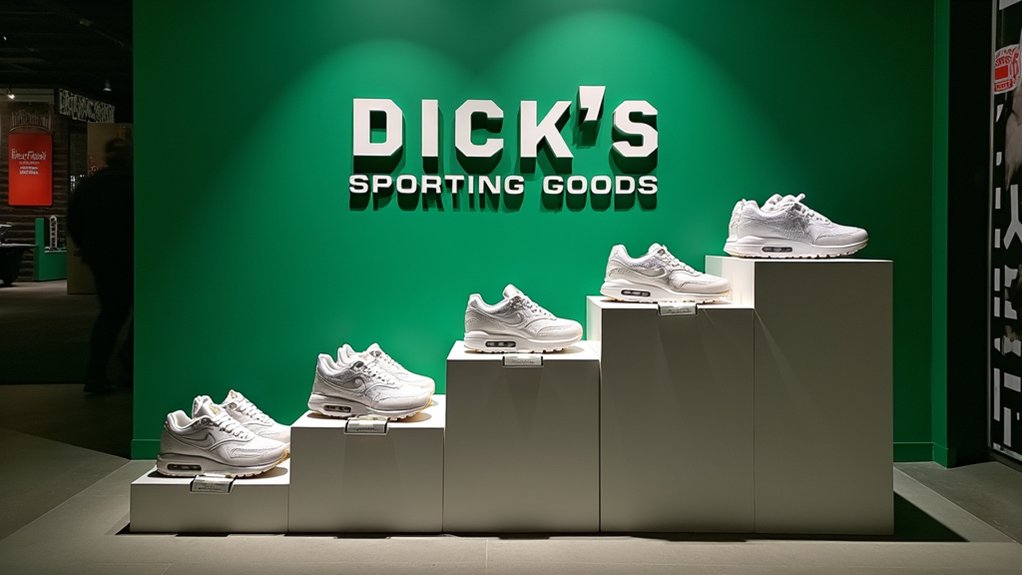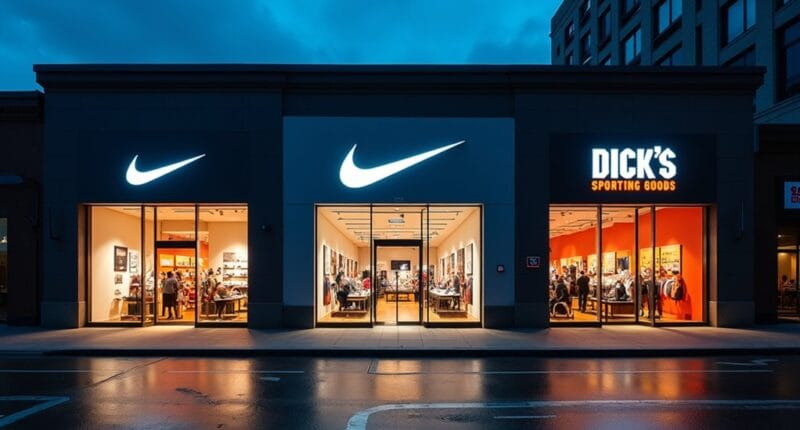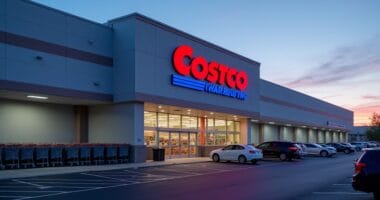Nike’s playing chess while everyone else plays checkers. The sportswear giant’s apparent retreat from direct-to-consumer sales into wholesale isn’t a step backward – it’s a power move. Through Dick’s $2.4 billion Foot Locker acquisition, Nike gains unprecedented market leverage, premium shelf space, and enhanced storytelling opportunities without sacrificing margins. The merger creates the world’s largest athletic shoe retailer, with Nike projected to represent up to 35% of sales. The real game’s just beginning.

Nike is making a dramatic about-face in its retail strategy, as Dick’s Sporting Goods‘ $2.4 billion acquisition of Foot Locker creates a sneaker-selling powerhouse. The deal, expected to close in late 2025, marks a significant shift from Nike‘s previous direct-to-consumer obsession. Talk about a plot twist.
Under CEO Elliott Hill’s leadership, Nike is embracing wholesale again, and the timing couldn’t be better. The merged entity will become the world’s largest athletic shoe retailer, with Nike projected to represent a whopping 30-35% of total sales. That’s a lot of swooshes under one roof. The acquisition will provide enhanced brand leverage through exclusive product offerings.
Nike’s pivot back to wholesale comes at the perfect moment, aligning with a retail merger that will showcase their iconic swoosh at unprecedented scale.
The marriage between Dick’s and Foot Locker isn’t just about size – it’s about smart positioning. Dick’s brings its suburban stronghold and digital prowess, while Foot Locker adds 2,400 stores, mostly in urban areas and malls. For Nike, this means premium shelf space and better storytelling opportunities across the entire retail landscape. Analysts expect improved operations at Foot Locker under Dick’s management expertise.
The numbers tell an interesting story. Dick’s has been crushing it, with sales up 4.5% in preliminary Q1 2025 results. Meanwhile, Foot Locker has been stumbling, with sales down 6% year-over-year. Nike, which makes up half of Foot Locker’s revenue, stands to benefit from Dick’s operational discipline being applied to the struggling retailer. The merger demonstrates how market makers ensure stability in retail stocks.
This consolidated retail partnership gives Nike unprecedented leverage in the marketplace. The sportswear giant can now protect its pricing power without sacrificing margins, while benefiting from improved logistics and negotiating terms. The 2021 loyalty program link between Nike and Dick’s wasn’t just a coincidence – it was foreshadowing.
Jefferies analysts are bullish on Nike’s position in this retail reshuffling, recommending stock purchases at current levels. The deal effectively intertwines the destinies of all three companies, creating a retail ecosystem that aligns perfectly with Nike’s Consumer Direct Acceleration strategy.
Who knew Nike’s retreat from direct-to-consumer would lead to such a powerful comeback through wholesale?





